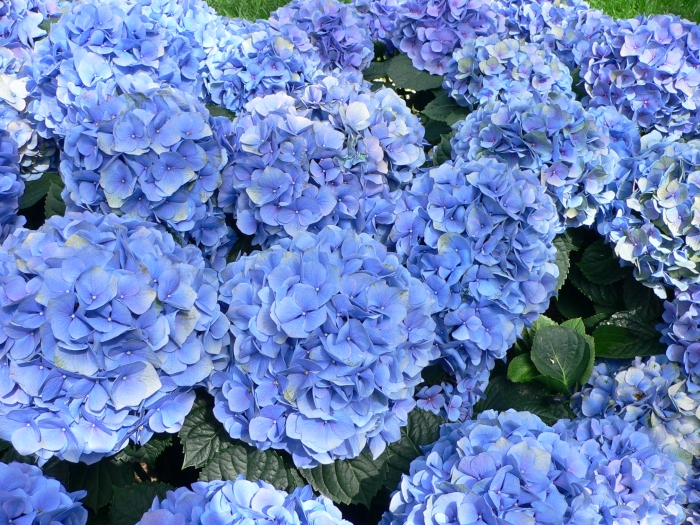Big Leaf Hydrangea
(Hydrangea macrophylla)
Big Leaf Hydrangea (Hydrangea macrophylla)
/
/

Raul654
CC BY-SA 3.0
Image By:
Raul654
Recorded By:
Copyright:
CC BY-SA 3.0
Copyright Notice:
Photo by: Raul654 | License Type: CC BY-SA 3.0 | License URL: http://creativecommons.org/licenses/by-sa/3.0/ | Uploader: Raulbot | Publisher: Wikimedia Commons | Title: Hydrangea_macrophylla_-_Hortensia_hydrangea.jpg | Notes: {{Information |Description={{en|1=Ripening seed pods of virginia waterleaf (Hydrophyllum virginianum) in early June, Iowa City, Iowa.}} |Source=Own work by uploader |Author=[[User:Douglas W. Jones|Douglas W. Jones]] |Date=2009-06-01 |Permission={{PD-

















































































Estimated Native Range
Summary
Hydrangea macrophylla, commonly known as Big Leaf Hydrangea or alternatively as French Hydrangea, Lacecap Hydrangea, Mophead Hydrangea, Penny Mac, and Hortensia, is a deciduous shrub native to Japan. It typically grows to a height and width of 2 m (7 ft) and 2.5 m (8 ft), respectively. This plant is characterized by its large heads of pink or blue flowers that bloom in summer and autumn, depending on the climate.
In its native habitat, Big Leaf Hydrangea thrives in woodland areas and shady spots, making it an ideal plant for similar settings in cultivation. It is widely cultivated around the world in various climates and is particularly effective at adding a splash of early summer color to shady areas and woodland gardens in warmer climates. Its rich foliage and large size make it a wonderful backdrop for white or light-colored flowers, including tall-growing perennials and annuals. For most prolific flowering, minimal pruning is recommended. The flowers are easily air-dried and long-lasting. In cultivation, it generally does best in part shade, with low water requirements, and in soils with fast, medium, or slow drainage. It is commonly placed in a mixed shrub border or at the back of a flower bed.CC BY-SA 4.0
In its native habitat, Big Leaf Hydrangea thrives in woodland areas and shady spots, making it an ideal plant for similar settings in cultivation. It is widely cultivated around the world in various climates and is particularly effective at adding a splash of early summer color to shady areas and woodland gardens in warmer climates. Its rich foliage and large size make it a wonderful backdrop for white or light-colored flowers, including tall-growing perennials and annuals. For most prolific flowering, minimal pruning is recommended. The flowers are easily air-dried and long-lasting. In cultivation, it generally does best in part shade, with low water requirements, and in soils with fast, medium, or slow drainage. It is commonly placed in a mixed shrub border or at the back of a flower bed.CC BY-SA 4.0
Plant Description
- Plant Type: Shrub
- Height: 3-6 feet
- Width: 3-6 feet
- Growth Rate: Rapid
- Flower Color: Blue, Pink, Purple, White
- Flowering Season: Spring, Summer
- Leaf Retention: Deciduous
Growth Requirements
- Sun: Part Shade
- Water: Medium
- Drainage: Medium
Common Uses
Bee Garden, Bird Garden, Border Plant, Butterfly Garden, Hummingbird Garden, Potted Plant, Rabbit Resistant, Rock Garden, Showy Flowers, Street Planting
Other Names
Common Names: French Hydrangea, Hortensia, Lacecap Hydrangea, Hydrangea, Mophead Hydrangea, Penny Mac, Garten-Hortensie, Hortensia À Grandes Feuilles, Grote Hortensia, 수국
Scientific Names: , Hydrangea macrophylla, Hydrangea hortensia, Hydrangea florida, Viburnum macrophyllum, Hydrangea nigra, Hydrangea hortensis, Hydrangea macrophylla var. macrophylla, Hydrangea macrophylla f. otaksa, Hydrangea macrophylla var. otaksa
GBIF Accepted Name: Hydrangea macrophylla (Thunb.) Ser.